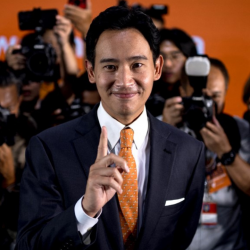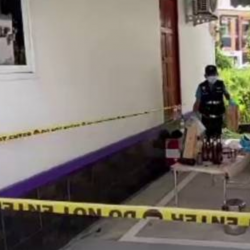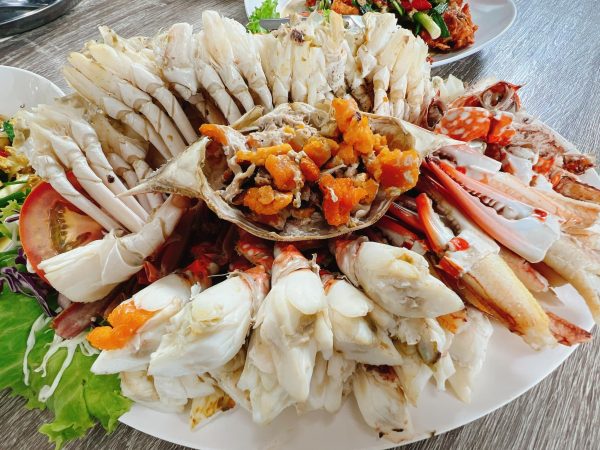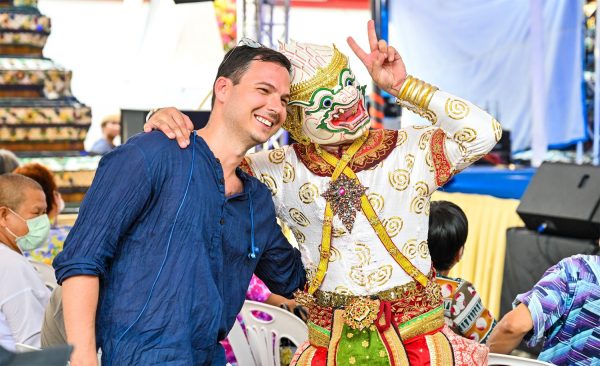Royal Ploughing Ceremony predictions positive for Thailand this year
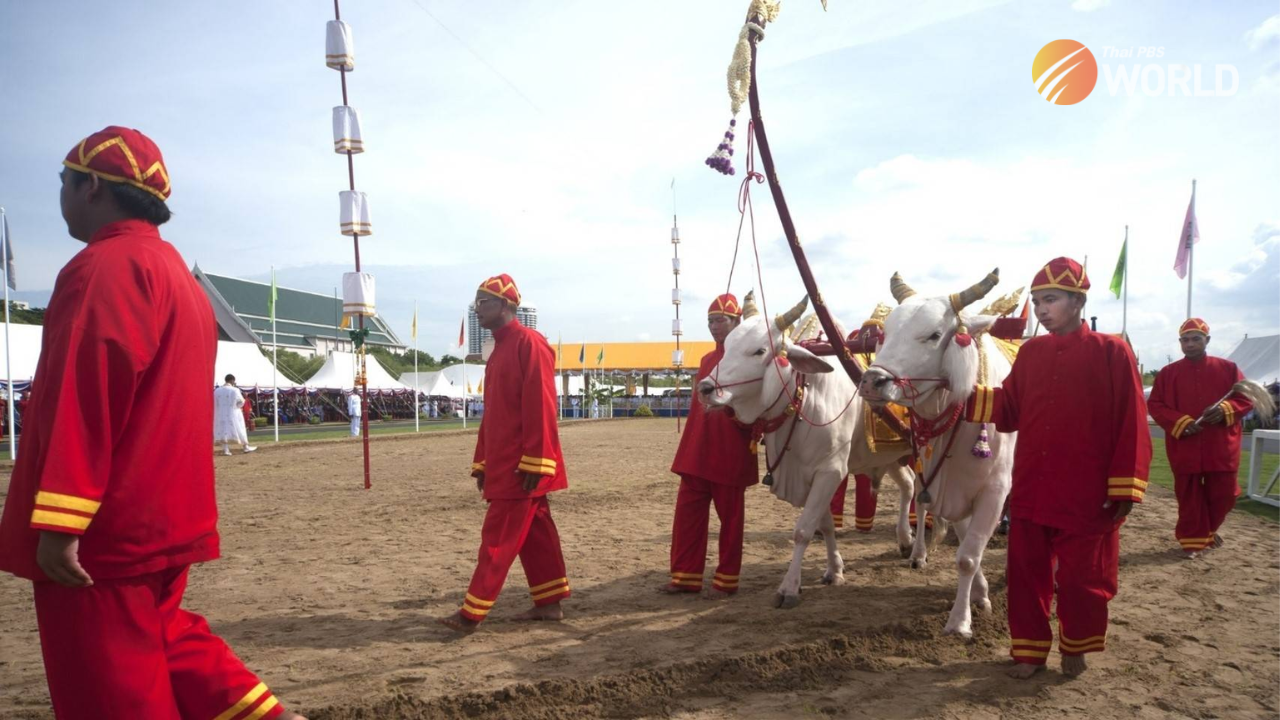
Thailand can look forward to economic prosperity this year, with good rice crops, adequate water for cultivation and foreign trade expansion, according to predictions made at the Royal Ploughing Ceremony, held this morning (Wednesday) at Sanam Luang on “Phuetcha Mongkhon Day” or Farmer’s Day.
Their Majesties the King and Queen presided over the ceremony. This year’s Phraya Raek Na, the person assigned to perform the ceremony was Prayoon Insakul, the permanent secretary of the Ministry of Agriculture and Agricultural Cooperatives.
Predictions are traditionally divided into parts. In the first part, the Phraya Raek Na will randomly choose one of the three pieces of cloth of different lengths, 4, 5 and 6 “kueb”, each of which indicates different predictions.
He picked the piece which is 5 “kueb” long, which predicts that there will be enough rain this year for rice cultivation and good crops, as well as plentiful of food.
The second part of the ceremony is the presentation of seven kinds of food to two oxen. This year, they ate grass and drank liquor, which also means plentiful food, sufficient water supply, good communication, trade expansion and economic growth.
The Royal Ploughing ceremony, or the Charat Nangkhan Raek Na Khwan, which marks the beginning of the rice cultivation season, is a combination of two ceremonies, namely the Phuetcha Mongkhon, which is a Buddhist ceremony, and the Brahmin ceremony, called Charat Nangkhan Raek Na Khwan.
The Phuetcha Mongkhon ceremony is held at the chapel of the Temple of the Emerald Buddha, to bless the seeds to be used in the Royal Ploughing Ceremony. The ceremony is held one day before the Royal Ploughing Ceremony.
The Charat Nangkhan Raek Na Khwan in Thailand dates back to the Sukhothai era. The kings then presided over the ceremony, but did not perform it.
In the Ayudhya era, which lasted over four centuries, the kings did not attend the ceremony, but confined themselves to meditation for three days. A royal representative attended the ceremony on his behalf.
In the Rattanakosin era, King Rama I ordered the minister of agriculture to perform the duty of Phraya Raek Na and assigned another person to perform the “swing standing“. This person has to stand on the left foot at the centre of the field with his right foot resting on his left knee. He must hold this position until a farmer ploughs a circle around him.
Later, King Rama III assigned only one person to perform the duties of both the swing stander and Phraya Raek Na.
A radical change took place during the reign of King Rama IV, when he ordered that every royal rite be accompanied by a Buddhist ceremony. Hence, the Phuetcha Mongkhon Ceremony was developed and has been observed, along with the Brahmin-influenced Royal Ploughing Ceremony.
The Royal Ploughing Ceremony continued until 1936, when it was interrupted for over three decades. It was revived in 1960 by the cabinet to preserve the royal tradition and to raise the morale of Thai people.
The late King Bhumibol presided over this ceremony every year during his reign. Today, King Vajiralongkorn continues this royal responsibility.
The essence of the Royal Ploughing Ceremony is to bless the grains and seeds bestowed by the palace, to keep those seeds healthy and free from diseases. The seeds used in the ceremony are mainly rice and 40 other types of crop.
The blessed seeds are sown at the ceremonial ground, and farmers are allowed to collect them to be sown in their own rice fields for good fortune.

